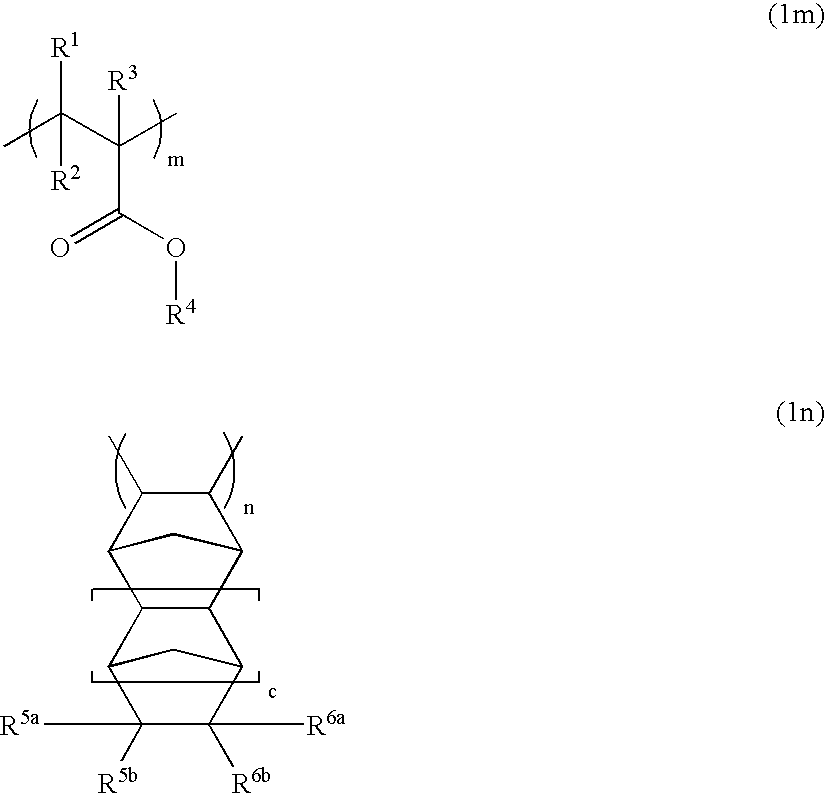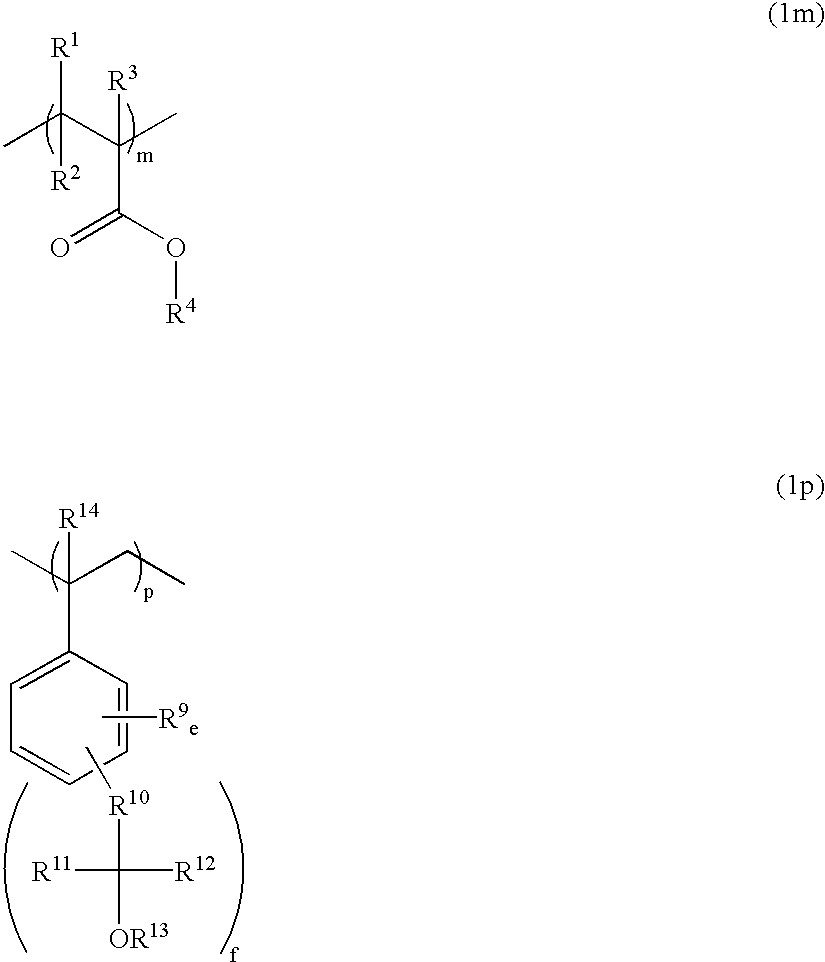Polymers, resist compositions and patterning process
- Summary
- Abstract
- Description
- Claims
- Application Information
AI Technical Summary
Benefits of technology
Problems solved by technology
Method used
Image
Examples
synthesis example 1
Copolymerization of Monomer 1 and Monomer 2 (7:3)
In a 500-ml flask, 28.8 g of Monomer 1 and 27.4 g of Monomer 2, both shown below, were dissolved in 100 ml of toluene. The system was fully purged of oxygen, charged with 0.33 g of the initiator AIBN, and heated at 60° C. at which polymerization reaction took place for 24 hours.
The polymer thus obtained was worked up by pouring the reaction mixture into hexane whereupon the polymer precipitated. The polymer collected was dissolved in tetrahydrofuran and poured into 10 liters of hexane for precipitation. This cycle was repeated twice. The polymer was separated and dried. There was obtained 44.1 g of a white polymer, which was found to have a Mw of 8,500 as measured by the light scattering method, and a dispersity (Mw / Mn) of 1.6 as determined from the GPC elution curve. On 1H-NMR analysis, the polymer was found to consist of Monomer 1 and Monomer 2 in a molar ratio of 68:32.
synthesis example 2
Copolymerization of Monomer 3 and Monomer 2 (7:3)
In a 500-ml flask, 26.2 g of Monomer 3 and 27.4 g of Monomer 2, both shown below, were dissolved in 100 ml of toluene. The system was fully purged of oxygen, charged with 0.33 g of the initiator AIBN, and heated at 60° C. at which polymerization reaction took place for 24 hours.
The polymer thus obtained was worked up by pouring the reaction mixture into hexane whereupon the polymer precipitated. The polymer collected was dissolved in tetrahydrofuran and poured into 10 liters of hexane for precipitation. This cycle was repeated twice. The polymer was separated and dried. There was obtained 40.2 g of a white polymer, which was found to have a Mw of 9,800 as measured by the light scattering method, and a dispersity (Mw / Mn) of 1.85 as determined from the GPC elution curve. On 1H-NMR analysis, the polymer was found to consist of Monomer 3 and Monomer 2 in a molar ratio of 72:28.
synthesis example 3
Copolymerization of Monomer 1 and Monomer 4 (2:8)
In a 500-ml flask, 11.6 g of Monomer 1 and 43.2 g of Monomer 4, both shown below, were dissolved in 100 ml of toluene. The system was fully purged of oxygen, charged with 0.33 g of the initiator AIBN, and heated at 60° C. at which polymerization reaction took place for 24 hours.
The polymer thus obtained was worked up by pouring the reaction mixture into hexane whereupon the polymer precipitated. The polymer collected was dissolved in tetrahydrofuran and poured into 10 liters of hexane for precipitation. This cycle was repeated twice. The polymer was separated and dried. There was obtained 35.2 g of a white polymer, which was found to have a Mw of 12,100 as measured by the light scattering method, and a dispersity (Mw / Mn) of 1.75 as determined from the GPC elution curve. On 1H-NMR analysis, the polymer was found to consist of Monomer 1 and Monomer 4 in a molar ratio of 22:78.
PUM
| Property | Measurement | Unit |
|---|---|---|
| Length | aaaaa | aaaaa |
| Nanoscale particle size | aaaaa | aaaaa |
| Wavelength | aaaaa | aaaaa |
Abstract
Description
Claims
Application Information
 Login to View More
Login to View More - R&D
- Intellectual Property
- Life Sciences
- Materials
- Tech Scout
- Unparalleled Data Quality
- Higher Quality Content
- 60% Fewer Hallucinations
Browse by: Latest US Patents, China's latest patents, Technical Efficacy Thesaurus, Application Domain, Technology Topic, Popular Technical Reports.
© 2025 PatSnap. All rights reserved.Legal|Privacy policy|Modern Slavery Act Transparency Statement|Sitemap|About US| Contact US: help@patsnap.com



